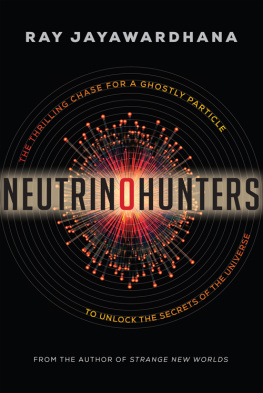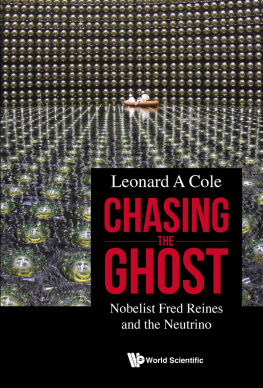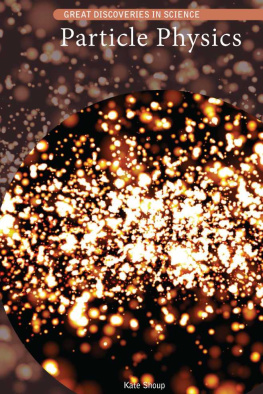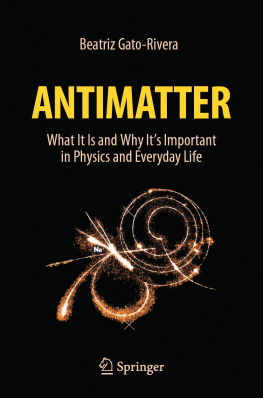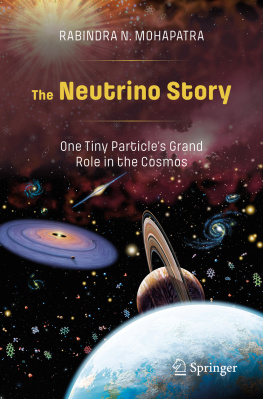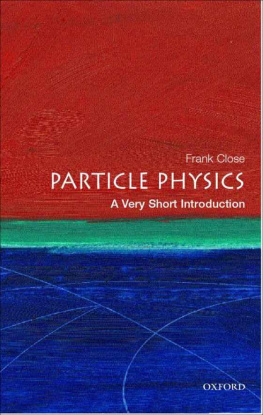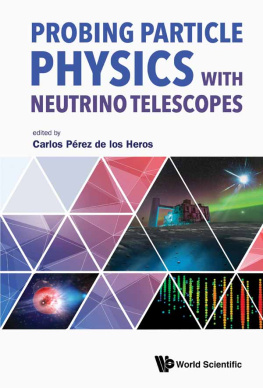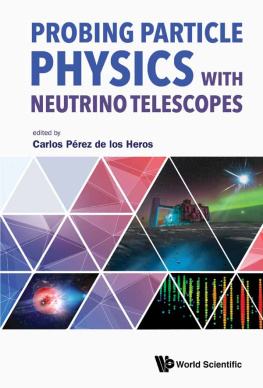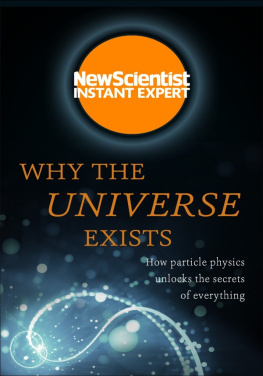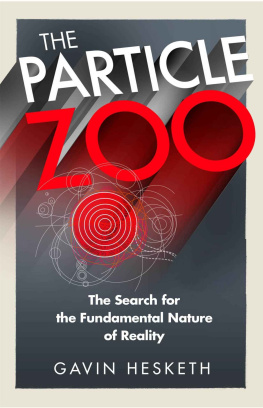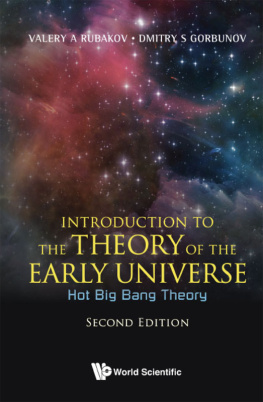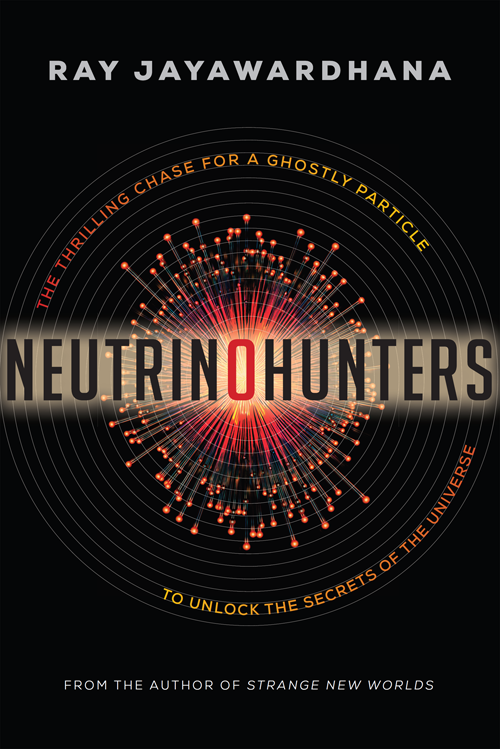NEUTRINO
HUNTERS
THE THRILLING CHASE FOR
A GHOSTLY PARTICLE TO UNLOCK
THE SECRETS OF THE UNIVERSE
RAY JAYAWARDHANA

For my mother, Sirima, with love and gratitude
The most exciting phrase to hear in science, the one that heralds new discoveries, is not Eureka! but Thats funny
Isaac Asimov
There he stood, wearing a red parka, Norwegian Prime Minister Jens Stoltenberg, on blindingly white snow against a clear blue sky, 9,000 feet above sea level, with the temperature hovering at minus 20 degrees Fahrenheit. We are here today to celebrate one of the most outstanding achievements of mankind, he bellowed out, as the sounds of flags flapping in the wind and snow crushing under a walkers boots threatened to muffle his voice. His brief remarks over, with a couple of hundred workers, guests, and tourists watching, Stoltenberg unveiled a bust carved in ice, placed atop a waist-high column: Thats the man!
The ice sculpture bore the likeness of Stoltenbergs legendary countryman Roald Amundsen. The low-key ceremony at the bottom of the world marked the centenary of Amundsen and four mates arriving at the South Pole on December 14, 1911, delivering historic glory to the young nation of Norway, which had become independent from Sweden a mere six years earlier. Fueled by relentless determination and aided by dogsleds, Amundsens team famously beat the ill-fated expedition led by the British naval officer Robert Falcon Scott by nearly five weeks, scoring what was undoubtedly a remarkable feat of terrestrial exploration.
Today the frozen wasteland where the fierce competition between Amundsen and Scott played out, with the pride of nations and the lives of heroes at stake, is a hotbed of activity for a different breed of explorers with more ethereal goals. Intrepid bands of scientists racing to unravel mysteries of life, our planet, and the universe are the ones laying claim to Antarctica now. In fact, the continent crawls with well over a thousand scientists and support personnel during the summer months. Geologists dig up ice cores and track the movements of glaciers for clues about climate change. Atmospheric scientists fly helium-filled balloons to measure stratospheric ozone, to complement the observations of satellites staring down from space. Paleontologists forage for fossils of creatures that were wiped out by the deadliest of known extinctions 250 million years ago. Biologists scour the dry valleys of Antarctica in search of organisms that thrive in extreme habitats. In early 2012, after many years of drilling, Russian researchers pierced through two miles of ice to reach Lake Vostok, a pristine subglacial reservoir shielded from sunlight and the wind for some 20 million years; they had hopes of encountering hitherto unknown life-forms.
Two years earlier, I got to experience what it was like to live and work on the ice when I went to Antarctica as a member of a meteorite-collecting expedition. We reached McMurdo Station, the American research center on the coast located near Scotts 1902 landing site, by military transport plane from New Zealand. After a week of preparations, packing, and training, we then flew to a seasonal base camp, where, two by two, we boarded a Twin Otter plane on skis for the final leg of our journey. The small aircraft, operated by Canadian bush pilots, dropped us off on a remote ice field just five degrees from the Pole. Thats where eight of ustwo women and six mencamped out in yellow, pyramid-shaped Scott tents for the next five bone-chilling weeks, cut off from the rest of the world except for a satellite telephone and the occasional drop-off of mail and supplies. This being the Antarctic summer, the Sun was always up, tracing a counterclockwise circle in the sky every twenty-four hours. There was no sign of lifehuman, animal, or plantto be seen anywhere.
Day after day, if the winds were bearable, we went out on snowmobiles or on foot to search the nearby vast ice field and the moraines next to the hills for rocks that had fallen from space. Wrapped in big red parkas as well as thermal layers, bunny boots, neck warmers, gloves, goggles, balaclavas, and hats, we took care to avoid frostbite and crevasses during our excursions. It was easy to slip and fall on the rock-hard ice and hurt yourself badly. I slid off the Ski-Doo once, but thankfully the thick parka cushioned my fall. Others on the team also had minor mishaps, but we survived the cold, the tedium, and the isolation without any serious problems. In fact, we enjoyed the stark beauty of the landscapethe views from the tops of rocky peaks were especially magnificentand found ways to entertain ourselves. By the expeditions end, our team had collected a total of 900 meteorites, which are now available to researchers from around the world for a variety of studies. Our own reward was the remarkable experience itselfand the delightful Adlie and emperor penguins we encountered near McMurdo at the end of the season. My one regret is that I didnt get to visit the South Pole, despite being so close to it.
The focus of activity at the Pole itself is decidedly extraterrestrial. These scientists seem to have taken to heart Marcel Prousts adage that the only true voyage of discovery would not be to travel to new lands, but to possess other eyes. The most striking part of their apparatus near the Pole is a 10-meter (33-foot) radio dish turned skyward, to map the feeble afterglow of the big bang. One of my Toronto colleagues, Keith Vanderlinde, spent most of the year 2008 taking care of this telescope; he survived the polar night that lasted for six months, temperatures that dipped to minus 100 degrees Fahrenheit, and the overwhelming sense of isolation, not to mention the short showers and the severe boredom. But the most ambitious, and unconventional, of the scientific instruments near the South Pole is buried permanently deep under the ice, and it looks down, not up. Its constructionor burial, to be more accuratewas completed just a year before the Amundsen centennial celebration. All that the visiting dignitaries could see aboveground was a rectangular office trailer on stilts, filled with cables and computers. There was little sign of what lay beneath but for the small flags that scientists had planted helpfully on the ice to mark its mammoth footprint.
IceCube is an observatory like no other. The glacial ice itself, transparent and cleared of air bubbles by extreme pressure at depths greater than a mile, serves the same purpose as the smooth primary mirror of a conventional astronomical telescope. Buried in it are 86 long steel cables standing vertically, with 60 basketball-size globes hanging on each at regular intervals. Every one of the 5,160 globes contains optical sensors and electronics. The sensors, called phototubes, act like lightbulbs in reverse: they collect light and generate electric signals. In the case of IceCube, these sensors scrutinize the subterranean ice for faint blue flashes that occasionally shimmer in the dark stillness. Whenever a sensor detects a flash, it sends a signal to computers on the surface.
The blue flickers mark the passage of elementary particles known as muons, which belong to the same family as electrons but are about two hundred times more massive. By combining signals from the different nodes of this deeply buried sensor network, physicists can trace a muons path in 3-D. But the researchers are not after the muons themselves. They are hunting for neutrinos, by far the most elusive and the weirdest of all known denizens of the subatomic world. These ghostly particles interact every once in a while with protons within ice molecules to release muons, thus betraying their presence as the muons in turn light up the ice. Since a newly created muon travels through ice along the same path as the incoming neutrino did, researchers can tell which direction the neutrino came from by examining the muons trail.

